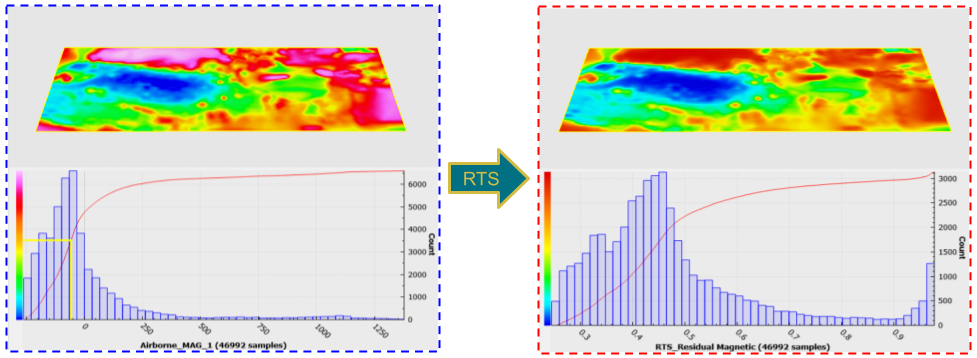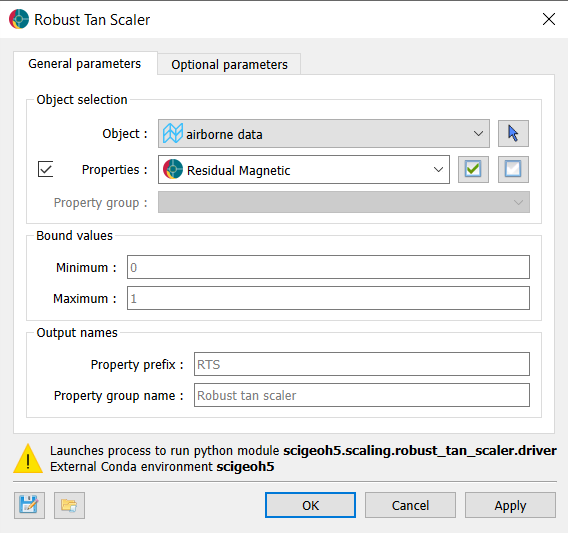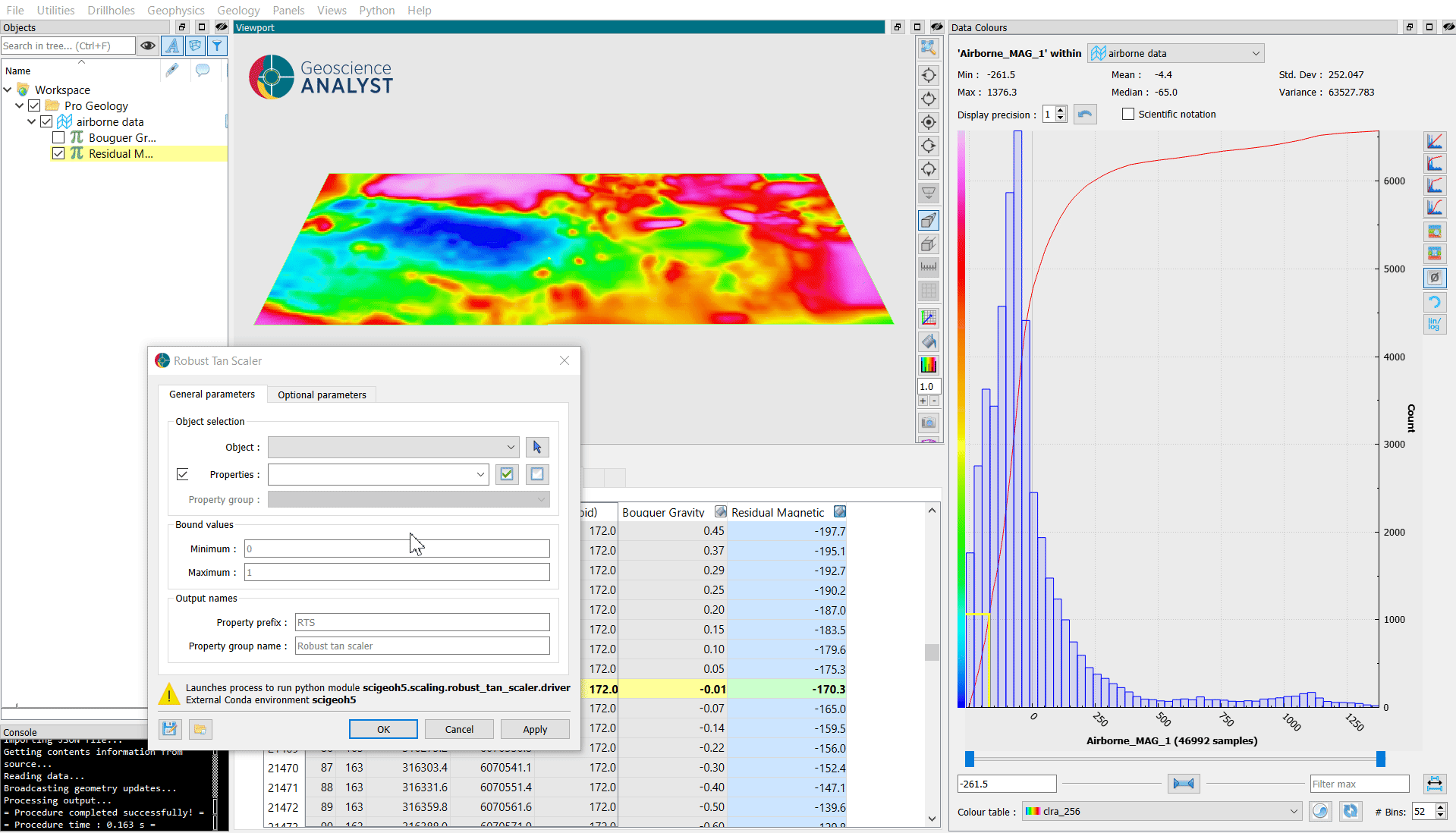Robust Tan Scaler Transformation¶
The Robust Tan Scaler (RTS) is a normalization technique designed for continuous variables with heavy-tailed or skewed distributions, where extreme outliers can otherwise dominate standard scaling or min–max normalization.

Fig. 1 Example of the RTS being applied to magnetic data dominated by large field values over a mineralized body.¶
In geoscience, datasets frequently contain anomalous values spanning several orders of magnitude, with a few extreme points masking subtler regional trends. For example, in magnetic data, highly magnetic geological formations can yield anomalies reaching thousands of nanoteslas (e.g., 1000-3000 nT), far exceeding the typical variations of tens to hundreds of nanoteslas found in surrounding areas. These extreme values may introduce instabilities in subsequent analyses and modeling processes. A plain min–max scaler would either compress most data into a tiny subrange or clip the tails entirely; a standard scaler can leave unbounded tails. The RTS gracefully compresses outliers toward the ends of the target interval, preserving continuity and order without harsh truncation.
The RTS applies a three‐stage, outlier-aware normalization to one or more numeric properties:
Standardize each property so that its values lie roughly in [-π/2, +π/2] (mean = 0, σ = π/2).
Tan-suppress the tails: values beyond ±π/2 are smoothly compressed toward ±π via a piecewise arctan function.
Min–max project the full range [-π, +π] into your desired window [min_val, max_val] (default [0, 1]).
Interface¶
The general parameters for the Robust Tan Scaler are shown in the figure below.

The options are described as follows:
Object selection¶
Object: The object containing the dataset to be transformed using the Robust Tan Scaler.
Data: One or more Float data properties to scale.
Bound values¶
Minimum: Lower bound of the output range (min_val).
Maximum: Upper bound of the output range (max_val).
Output names¶
Data prefix: Prefix added to each property name in the output group.
Data group name: Name of the new HDF5 property group created to hold the scaled data.
Tutorial¶
The following animated image presents a tutorial on how to use the Robust Tan Scaler application.
Launch Geoscience ANALYST and open your .geoh5 project.
Navigate to Geology > Robust Tan Scaler.
In the dialog, pick your Object and Data.
(Optional) Adjust Minimum and Maximum for the target range.
(Optional) Adjust Data prefix or Data group name.
Click OK to close the dialog and run the application, or Apply to run the application and keep the dialog open for further adjustments.
Inspect the transformed data.

